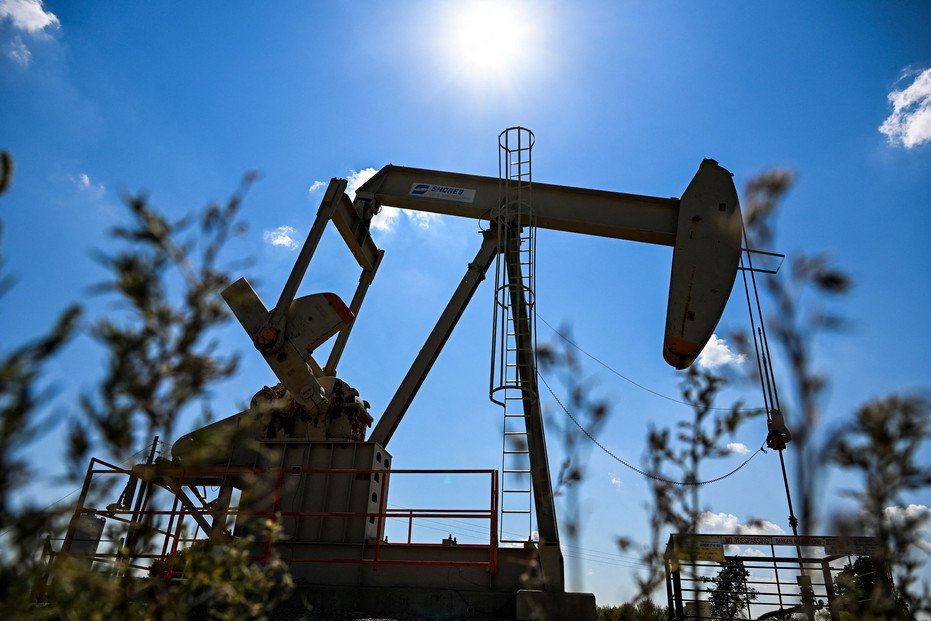Forecasts for demand growth in 2024 vary from 1.1 million bpd by the International Energy Agency to 2.25 million bpd expected by OPEC.

As the oil industry braces for the uncertainties of 2024, investors are grappling with concerns of oversupply, slowing economic growth, and simmering tensions in the Middle East that could trigger price volatility. After an average of $80 per barrel in 2023, Brent crude is expected to face a challenging year ahead, with a Reuters survey predicting an average of $84.43 per barrel in 2024.
The lingering effects of a tumultuous 2022, marked by prices surging above $100 due to disruptions in Russian supplies following the Ukraine war, continue to cast a shadow over the market. The resilience of prices, despite hitting an all-time demand high of over 100 million barrels per day (bpd), has been attributed to a strong dollar and robust non-OPEC output.
Forecasts for demand growth in 2024 vary from 1.1 million bpd by the International Energy Agency to 2.25 million bpd expected by OPEC. However, supply is expected to outpace demand, with estimates ranging from 1.2 million to 1.9 million bpd, primarily driven by non-OPEC producers, according to consultancies Rystad Energy, J.P. Morgan, Kpler, and Wood Mackenzie.
“We’re looking for an oversupplied market every quarter of next year,” warns Vikas Dwivedi, a global energy strategist at Macquarie.
Key Factors to Watch in 2024:
1. OPEC+ Compliance:
Investors are closely monitoring first-quarter supply data to assess whether OPEC and its allies adhered to their planned 2.2 million bpd in voluntary output cuts. If compliance is observed, it could lead to a small deficit of less than 500,000 bpd.
WoodMac’s Ann-Louise Hittle emphasizes that the first quarter will be crucial in evaluating adherence to the voluntary supply cuts. Based on current demand forecasts, OPEC+ may not need to extend cuts beyond the first quarter.
2. Wild Cards – Russia, Iran, Venezuela:
The return of Venezuelan oil to global markets, coupled with potential extensions of U.S. sanctions suspension, could impact oil production. The lifting of sanctions on Venezuela’s PDVSA is expected to gradually increase output from 760,000 bpd in 2023 to 880,000 bpd in 2024.
Additionally, the continuous flow of Russian and Iranian oil to global markets, despite sanctions, is expected to influence pump prices. Iran aims for crude output of 3.6 million bpd by March 2024.
3. New Refineries:
The tightness in refined products, especially diesel post-Russia’s Ukraine invasion, is set to ease with over 1 million bpd of new refining capacity coming online in China, India, Mexico, the Middle East, and Nigeria in 2024. This includes projects like Yulong Petrochemical in China and expansions in India, Nigeria, and Mexico.
4. Crude Quality Mismatch:
Non-OPEC producers, led by Brazil, Guyana, and the United States, are expected to drive output growth in 2024, resulting in an increase in the supply of light sweet oil. This could narrow price spreads between crude grades globally, impacting refinery yield optimization and operational flexibility.
The mismatch in crude quality may prompt shifts in sourcing, with China and India increasingly looking to the Atlantic Basin. This could also lead to intensified competition between Asia and the United States for heavy barrels, potentially affecting the relative profitability of refining operations.
As the oil industry embarks on 2024, a complex interplay of geopolitical events, compliance dynamics within OPEC+, and the evolving global refining landscape will undoubtedly shape the trajectory of oil prices and market dynamics throughout the year. Investors and industry observers alike will be closely monitoring these factors, seeking insights into the intricate dance of supply and demand that defines the world of oil markets.